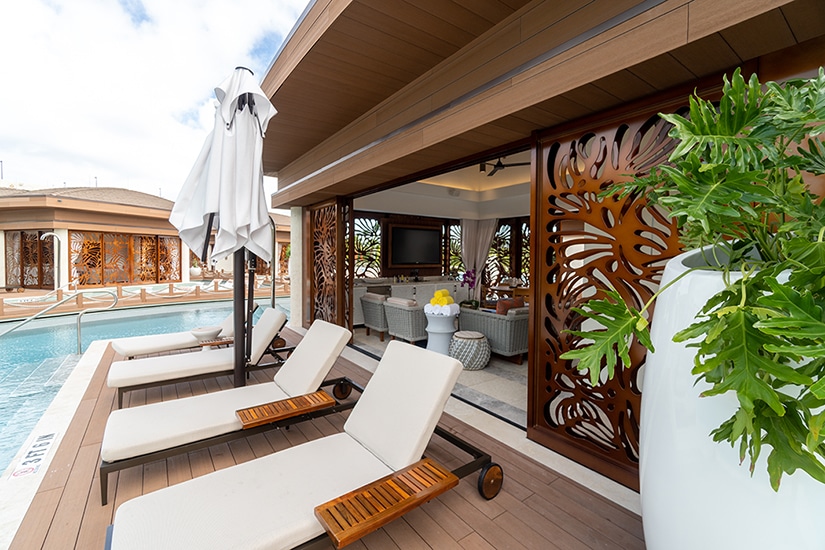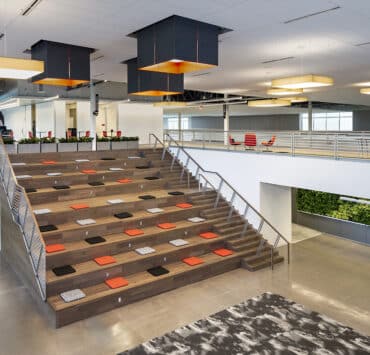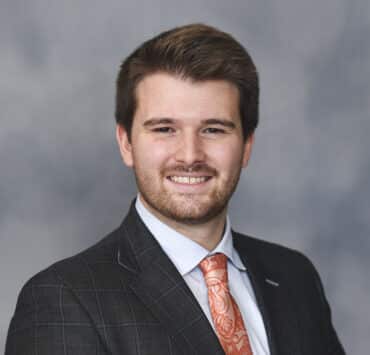|
Getting your Trinity Audio player ready...
|
Ann Fleming considers interior design less a career than a calling. But enduring passion for design doesn’t stop her from dabbling in other fields as part of her work.

“I like to create a story or a descriptive thread to help me visualize a space. I analyze a project like a psychologist would to help set a tone for an environment,” Fleming explains. “Design is about how an environment makes you feel.”
Fleming’s talent for telling stories and understanding emotions keeps her designs in high demand among some of the biggest names in the hospitality industry. She even serves as Registered Interior Designer on the Nevada State Board of Architecture, Interior Design, and Residential Design.
But prior to that, Fleming spent years building a reputation at the helm of her own design firm, Cleo Design, before joining Klai Juba Wald Architecture + Interiors (KJWA+I) in 2018 as the architectural firm’s first principal of interiors. Today, she continues to imbue projects for clients with the same intangible quality behind her initial success––a quality not seen but felt.
A Las Vegas native, Fleming credits her hometown with inspiring her as a designer. “I was lucky to become a professional in the early days of the city,” she says. “Being here during that time showed me the excitement and the growth of the hospitality industry.”
Fleming didn’t find her way to hospitality design right away, but when she did accept a position at hospitality focused Atlandia Design, her timing couldn’t have been better. “Megaresorts were just starting to develop on the Strip, so I had the opportunity to be part of the design team for Bellagio and Mirage,” she says, referring to two of Las Vegas’s major casino hotels. The energy and boldness of the city’s hospitality world drew her in, as did the prospect of creating fantastical interiors to suit that world.
As Las Vegas hospitality evolved, Fleming evolved with it. In 2000, she went out on her own with business partner Ken Kulas. She and Kulas led their firm for 17 years, thriving on their collective design expertise as much as their yin-and-yang business relationship. “Ken and I were able to express a design style that was fresh and new,” Fleming says. “We established a successful firm, but we never stopped being driven by new design but being humble to take the time to mentor new designers.”

As the firm’s profile grew, KJW took notice. As Fleming tells it, the architectural firm was extremely supportive and always “cheerleading” both of them from the early days. The introductions to a number of prominent clients laid the foundation for Fleming to join KJW when she and Kulas amicably parted ways to pursue different paths.
Making the transition even smoother, Fleming brought her entire design team with her to form KJWA+I. She saw the shift as a chance to deepen her commitment to fostering a collaborative, yet creative, new atmosphere for the team. “Joining an architectural firm benefited us as professionals,” she confirms. “Designers do not reach an apex at a certain age or year in practice; you continually evolve and mature. Architects see a space differently than interior designers do and we now get access to that viewpoint, too.”
Fleming also encourages creativity by giving each team member the space to explore and to share ideas, which she believes can come from anyone and anywhere. A globetrotter herself since her days summering in Norway as a child, she reminds the team when traveling to observe with an open mind, explore unique cultural design and etiquettes to see how it influences people and their interactions. Without knowing it, she says, you intuitively bring that experience and knowledge into projects to make them better.

That’s where psychology comes in. Fleming designs around not only what guests physically and emotionally carry with them into a space, but also where she hopes to lead them once they’re inside. “I want to take them on a journey,” she explains. “An intriguing design statement as simple as a paint color, wall texture, or carpet pattern can influence the overall feel of an environment.”

Beyond her fellow designers, Fleming collaborates closely with KJWA+I’s three architectural principals, John Wald, Brian Fink, and Mike Stewart. Together, the four principals come together to develop new client relationships, manage projects, participate in design, and push to create intriguing new stories for their clients. “A design firm is not a static business . . . like people and personalities, it evolves,” says Fleming, adding that the principals’ differing perspectives strike a balance similar to the one that she once achieved with Kulas. And, importantly, they all love what they do.
Fleming plans to channel that love into ongoing and future KJWA+I projects and mentions two projects very dear to her heart: Seminole Hard Rock Hotel & Casino Tampa and the Guitar Hotel at Seminole Hard Rock Hotel & Casino in Hollywood, Florida. After serving as an interior design lead on both projects during their initial building and development in the early 2000s, the invitation to refreshing the properties is such a compliment, she says. “Every project is exciting and challenging, but the ones where your client comes back to work with you again are the most rewarding.”


